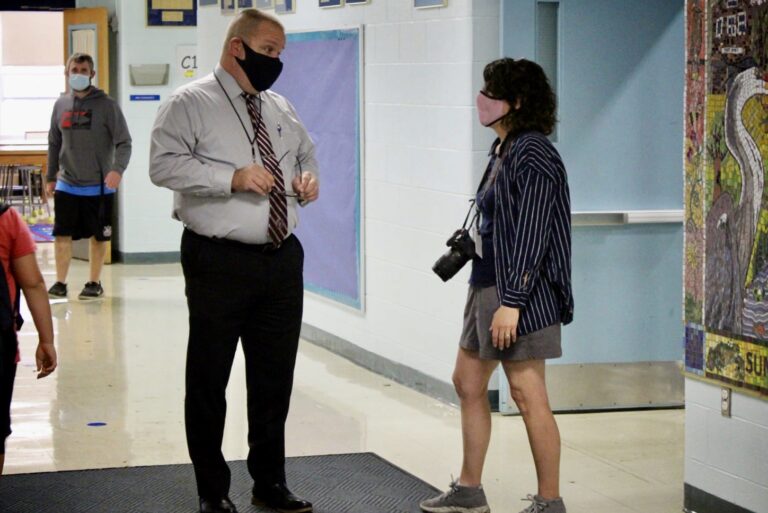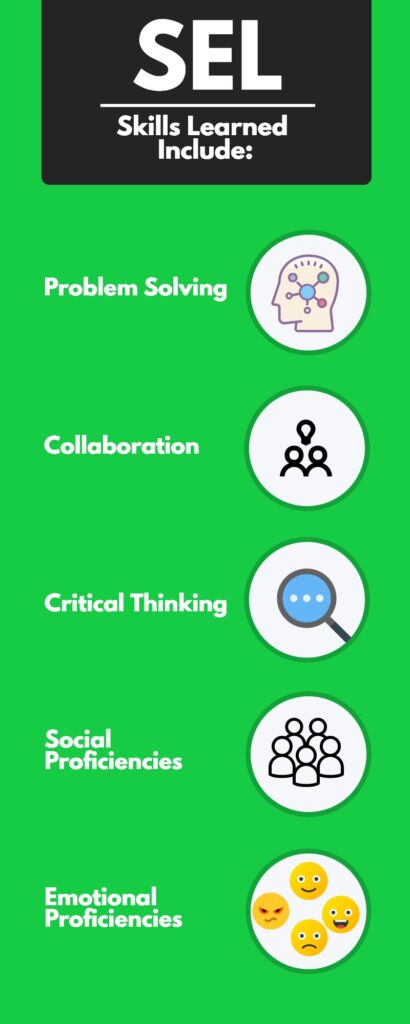Impact of SEL in Schools: A Superintendent's Perspective
Q&A with Robb Malay, Superintendent of School Administrative Unit (SAU) 29 in New Hampshire

Bring Social-Emotional Learning To the Forefront of Education
It’s no secret that developing social intelligence in children, adolescents and adults is the very best way to establish relationships and engage individuals and groups in lifelong learning. Social-emotional learning (SEL) has been on the educational stage for decades, but most often behind the scenes, playing a secondary role to academics. So what changed to bring SEL to the forefront of education? The easy answer is the COVID-19 pandemic, and the necessity for students and teachers to reconnect after two very disrupted school years. But the need for integrating SEL into instruction and school culture is much bigger than the pandemic.
How can we return to schools mid-COVID and reconnect with students? How can we build these connections, empowering students and teachers to effect change in classrooms, schools, communities, and beyond? What tools do we have at our disposal to make it happen? We recently asked Robb Malay, Superintendent of School Administrative Unit (SAU) 29 in New Hampshire, to reflect on some questions about the return to school and the importance of incorporating SEL in schools, including the impact of High 5’s Edge of Leadership SEL program in the Keene, NH School District. We are grateful to Robb for sharing his insights and providing honest and thoughtful feedback.
Back-to-School Reflections from SAU 29 Superintendent Robb Malay:

Q: What do you see as the challenges of returning to school post-COVID?
A: This could be a long list and a list that may come across as complaints, but I think that one of the biggest challenges (not to downplay the obvious safety concerns that the pandemic has gifted us with) is grounded on acceptance, adaptability, and resilience. With any life-altering situation…the death of a loved one, a catastrophic weather event, a change in job, a debilitating accident, a newborn child, a marriage, a promotion at work, and so on…life is inevitably going to be different. When we are able to recognize that things are different and accept those differences, we are able to adapt and demonstrate how resilient we are (or are not).
Q: How do you create/empower the community to get beyond COVID?
A: I’m not sure that there is one magical answer to this question as what works in one community may not work the same in another. I believe that recognizing we each have a capacity, that it is about “we” and not “me” and knowing what the priorities are is a good starting point. Additionally, recognizing that we all have a level of resiliency that may be different from others is helpful. Building that capacity and resiliency better positions our community both during the pandemic and beyond. Lastly, reinforcing that we are all individuals and as such, that it’s okay if we respond differently. The biggest challenge is understanding when it will be over. When you have a power outage, you call the power company and they tell you when they expect it to be restored (albeit they give you an over estimation on when that will be). Likewise, when a hurricane is coming, you can track when it will be upon you and when it will be past. It is much easier to endure when you know when the end time will be. With COVID, there is no known end time at this point.
Q: How do you see your teacher’s preparation and develop that skill set?
A: Through support and communication. This is a two-dimensional question in that teachers are not only professionals with an important responsibility for their students, but they are also people with a responsibility to themselves and their family. I was talking with a teacher that was frustrated because they were unable to schedule all of the things they wanted to do with their students because of individual student needs. Helping this teacher identify the difference between what they wanted to do and what they actually can do, and subsequently acknowledging that it was okay, made a huge difference for that teacher. Supporting our students AND our teachers will be critical.

Q: How do you see Social-Emotional Learning and Edge of Leadership as being helpful aspects of the solution?
A: Edge of Leadership (EOL) is, without pause, the most insightful and deliberate delivery of engagement that guides and builds participants’ skill sets to develop healthy social-emotional intelligence that I have been a part of in my nearly 30 years in education. The non-threatening environment created by the EOL staff that nurtures participation is established from the onset and enhanced as the programming moves forward. Participants feel valued and know that their emotions are valued as well. It is inclusive for everyone and there are no boundaries for growth.
Q: What are the best strategies to involve or educate families in SEL?
A: Benjamin Franklin may have summed this up best when he said “Tell me and I forget, teach me and I may remember, involve me and I learn.” Emotional intelligence is not a new concept as researchers have been investigating the correlation between IQs and success dating back to the 1980s. Without going into a dissertation, strong evidence was found that high IQs on their own did not translate directly to success, but high IQs when paired with healthy emotional intelligence (EQs) produced more successful outcomes. However, these conversations are still in the childhood stage as it applies to the students in our schools and our families. So, to close that gap, the best way, as Franklin stated, is to engage our families in what SEL is all about. This can be done in a number of ways, but participation in activities that facilitate awareness in identifying and understanding of their individual social and emotional intelligence has anecdotally demonstrated greater value. I have witnessed this with both students and staff in our schools, but also within myself as an individual.
Q: How is your district progressing?
A: We have now opened our schools and I have been able to visit our students and staff. There is universally a different vibe this school year. One that is much more familiar, exciting and simply happy. While it is still early in the year, things are most certainly aiming in the right direction.
Q: What are your priorities and concerns for colleagues and/or staff?
A: To hear Robb’s answer to this most important question, and get a good dose of inspiration, check out his welcome back presentation for 2021/22 school year.
What’s Next For SEL Programs?
Given the urgency of providing students and teachers with the support they need to successfully re-engage in learning, the importance of SEL programs – especially now – cannot be overstated. There has never been a better time to bring SEL to center stage, to take a lead role in revitalizing classrooms and school communities. Yes, students may have fallen behind in academics. But if they are not able to return to a welcoming school environment where they feel connected and valued, they won’t be able to successfully engage in social-emotional or academic learning.
So what can you do?
- Learn more about Rebuilding After COVID Professional Development SEL and High 5’s Edge of Leadership program.
- Incorporate SEL practices with your children at home – it’s fun and engaging!
- Lobby for the inclusion of SEL programs in your community schools.
Think of what we can accomplish if we become more connected and empowered to improve our local, national and global communities. Now is the time to make it happen!
Discover more about the fundamentals of SEL at The Collaborative For Academic, Social, and Emotional Learning (CASEL).